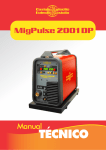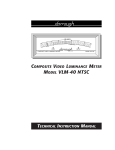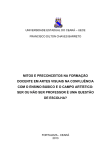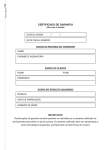Download Dorrough 40-A Instruction manual
Transcript
Digital Loudness Meters Model 280 and 380 -39 -38 -37 -36 -35 -34 -33 -32 -31 -30 -29 -28 -27 -26 -25 -24 -23 -22 -21 -20 -19 -18 -17 -16 -15 -14 -13 -12 -11 -10 -9 -8 -7 -6 -5 -4 -3 -2 -1 0 -39 -38 -37 -36 -35 -34 -33 -32 -31 -30 -29 -28 -27 -26 -25 -24 -23 -22 -21 -20 -19 -18 -17 -16 -15 -14 -13 -12 -11 -10 -9 -8 -7 -6 -5 -4 -3 -2 -1 0 MODEL 280-D U.S.A. Model 280-D -57 -54 -51 -48 -45 -42 -39 -36 -33 -30 -29 -28 -27 -26 -25 -24 -23 -22 -21 -20 -19 -18 -17 -16 -15 -14 -13 -12 -11 -10 -9 -8 -7 -6 -5 -4 -3 -2 -1 0 -57 -54 -51 -48 -45 -42 -39 -36 -33 -30 -29 -28 -27 -26 -25 -24 -23 -22 -21 -20 -19 -18 -17 -16 -15 -14 -13 -12 -11 -10 -9 -8 -7 -6 -5 -4 -3 -2 -1 0 MODEL 280-E U.S.A. 0 –1 –2 –3 –4 –5 –6 –7 –8 –9 -10 -11 -12 -13 -14 -15 -16 -17 -18 -19 20 21 22 23 24 25 26 27 28 29 30 31 32 33 34 35 36 37 38 39 U.S .A. Model 280-E 0 –1 –2 –3 –4 –5 –6 –7 –8 –9 -10 -11 -12 -13 -14 -15 -16 -17 -18 -19 20 21 22 23 24 25 26 27 28 29 30 31 32 33 34 35 36 37 38 39 38 0-D Technical Instruction Manual Digital Loudness Meters Model 280 and 380 April, 1999 Copyright © 1994 and 1999 by Dorrough Electronics, 20434 Corisco St., Chatsworth California, 91311. PH 818.998.2824, FAX 818.998.1507. Dorrough Electronics reserves the right to make changes and improvements in product specifications without notice. Introduction 1 1.1. Loudness Monitoring Double Standards For nearly 60 years the world has used two different standards for audio monitoring. In the United States, the VU meter, introduced in 1937, was the standard for level monitoring. In Europe, the PPM (Program Peak Meter) was the standard. 0 20 0 -2 40 -1 0 60 80 100 5 -3 -2 -1 VU +1 +2 -7 +3 2 1 3 4 5 6 7 The VU meter is a quasi-average reading device. Basically a voltmeter calibrated in power with ballistics chosen to represent early radio and film program material, it was never intended to indicate the peak excursions found in today’s program material. The PPM addressed the limitations of the VU meter, but because it displays and holds only the peak level of the waveform, the integration time of the quasi-average program level is almost completely ignored. Most contemporary studios have tried to solve their metering problems by using both VU and PPM meters on the same source in an attempt to get the maximum usable level out of a piece of program material. This has led to cramped and overly complex metering bridges and panels, and does not overcome the limitations of these systems. Even the switchable bar graph meters offered as a solution by some console manufacturers suffer from the same ballistic limitations. Unification In 1980, after years of hands-on experience and frustration with both conventional VU and PPM metering, Dorrough research led to the introduction of the Dorrough Model 40 Loudness Meter. By providing an easy to understand display showing the relationship between integration of RMS and peak level display, the model 40 was an overnight success. Today the model 40 is regarded as the standard in audio monitoring and is used throughout recording and broadcast facilities around the world. Introduction 1 The Dorrough Loudness Meter gives you a much more accurate picture of the actual energy content of audio program material than conventional metering. By simultaneously displaying two ballistics, the Dorrough Loudness Meter shows you the relationship between average and peak. You need only adjust the program level until either the peak or persistence reference is reached. This will result in the maximum level, regardless of program content. Material with or without compression can easily be matched for the same listening level. 0 20 -2 -25 0 40 -1 0 60 80 100 2 5 -3 -2 -1 VU +1 +2 -7 +3 -22 18 -20 - 3 4 5 6 7 1 4 -16 -1 A N ORM -12 -10 -8 -6 ANGE ISTENCE R L P E RS -4 -2 0 +2 +4 +6 NORMA L PEAK LOUDNESS MONITOR +8 +1 0 +1 2 +14 RANG E MODEL 40-A 1.2. Digital Audio and the Dorrough Loudness Meter Into the Digital Domain The Audio Engineering Society (AES), together with the European Broadcasting Union (EBU), have established a digital audio interface standard known as the AES/EBU interface. This standard provides robust formats for the exchange of digital audio information between professional audio devices, yet also provides flexibility for specialized applications. The International Electrotechnical Commission (IEC) has also endorsed a format based on the AES/EBU standard for consumer digital audio devices. Briefly, the AES/EBU format standard defines how two channels of audio information are periodically sampled, uniformly quantized and transmitted over a twisted wire pair. Left and Right audio channels are multiplexed, and the channel is self-clocking and self-synchronizing. The format is independent of sampling frequency and can be used with any sampling frequency including 32 kHz, 44.1 kHz, and 48 kHz, which are those recommended by AES for PCM applications. 2 Introduction New Challenges The wider dynamic range provided by this standard also poses new challenges in monitoring. The trend to obtain a “hotter” signal typically involves more sophisticated processing and compression. The narrowing gap between average level and peak level means more accurate monitoring is necessary to obtain desired results. Another important consideration in today’s digital recording and broadcasting include monitoring the “crash point”, or the point of reaching the maximum input level the system or equipment can handle. The Dorrough Digital Level Meters have been designed to meet these needs with unprecedented accuracy, flexibility and convenience in the Dorrough tradition. 1.3. The Dorrough 280 and 380 The Dorrough model 280 and 380 Digital Loudness Monitors (DLMs) provide the same basic functionality as the classic 40 series analog loudness meter except that they accept a digital data signal and display two channels. Horizontal or Vertical Mounting The model 280 is designed for horizontal mounting while the model 380 is designed for vertical mounting. Both models are offered with two scale ranges, a standard 40 dB range (-D suffix), and an expanded 60 dB range (-E suffix). Figure 1-1 illustrates the model 280 with both scale options, while Figure 1-2 shows the model 380 with both scales. -39 -38 -37 -36 -35 -34 -33 -32 -31 -30 -29 -28 -27 -26 -25 -24 -23 -22 -21 -20 -19 -18 -17 -16 -15 -14 -13 -12 -11 -10 -9 -8 -7 -6 -5 -4 -3 -2 -1 0 -39 -38 -37 -36 -35 -34 -33 -32 -31 -30 -29 -28 -27 -26 -25 -24 -23 -22 -21 -20 -19 -18 -17 -16 -15 -14 -13 -12 -11 -10 -9 -8 -7 -6 -5 -4 -3 -2 -1 0 MODEL 280-D U.S.A. Model 280-D -57 -54 -51 -48 -45 -42 -39 -36 -33 -30 -29 -28 -27 -26 -25 -24 -23 -22 -21 -20 -19 -18 -17 -16 -15 -14 -13 -12 -11 -10 -9 -8 -7 -6 -5 -4 -3 -2 -1 0 -57 -54 -51 -48 -45 -42 -39 -36 -33 -30 -29 -28 -27 -26 -25 -24 -23 -22 -21 -20 -19 -18 -17 -16 -15 -14 -13 -12 -11 -10 -9 -8 -7 -6 -5 -4 -3 -2 -1 0 MODEL 280-E U.S.A. Model 280-E Figure 1-1. 280 Front Vie Introduction 3 Two Channel Display As defined by the AES/EBU Digital Audio specification, two audio channels (A and B) are encoded into the serial datastream. On the model 280, Channel A (corresponds to Left), is displayed on the top scale, while Channel B (Right) is displayed on the lower scale. On the model 380, Channel A is displayed on the left scale, and B on the right. When multiple meters are installed in a console, channel designation can be made on the meter bezel (if used), or the meter bridge front panel. 380-D (40 dB scale) 0 –1 –2 –3 –4 –5 –6 –7 –8 –9 -10 -11 -12 -13 -14 -15 -16 -17 -18 -19 20 21 22 23 24 25 26 27 28 29 30 31 32 33 34 35 36 37 38 39 U.S.A. 0 –1 –2 –3 –4 –5 –6 –7 –8 –9 -10 -11 -12 -13 -14 -15 -16 -17 -18 -19 20 21 22 23 24 25 26 27 28 29 30 31 32 33 34 35 36 37 38 39 380-D 0 –1 –2 –3 –4 –5 –6 –7 –8 –9 -10 -11 -12 -13 -14 -15 -16 -17 -18 -19 20 21 22 23 24 25 26 27 28 29 30 33 36 39 42 45 48 51 54 57 U.S.A. 0 –1 –2 –3 –4 –5 –6 –7 –8 –9 -10 -11 -12 -13 -14 -15 -16 -17 -18 -19 20 21 22 23 24 25 26 27 28 29 30 33 36 39 42 45 48 51 54 57 380-E (60 dB scale) 380-E Figure 1-2. Model 380 Front Vie 40 dB or 60 dB Scale Both the model 280 and 380 are available with either 40 dB or 60 dB scale ranges. The “D” suffix (40 dB) uses 40 discrete LED indicators, each representing one dB. This scale provides an absolutely linear cadence of the display as a function of level, which is not obtainable with conventional VU metering where the metering ballistics vary with signal level. The 60 dB scale (“E” suffix) is available for applications requiring observation of a wider range of signal levels. This scale also provides one dB indications from 0 to -30dB, with the remaining nine LEDs indicating three dB steps (-33 to -60 dB). Either scale is available from the factory as an option. 4 Introduction Overrange Indication Overrange indication occurs when the input signal reaches a point one count over maximum allowed input level. When this happens, the top three LEDs (0, -1, and -2) all change color to red while tracking the program level. Overrange indication is set at the factory to occur at the point one count over the maximum signal level (the maximum level is the point at which the signal becomes all binary 1’s). This point can alternately be set to 4 counts over the maximum signal level by moving a jumper. Peak Hold Functions Both the model 280 and 380 provide three peak hold functions: 3-second peak hold (normal), indefinite peak hold, and no peak hold. These functions are selected through a three-position toggle switch (supplied), or if only a single function is desired, jumper selected on the DLM main circuit board. Normal operation (peak hold for 3-seconds) is provided at the center position of the toggle switch, or through jumpering as described in Section 4 of this book. In this mode, the highest peak is held for 3-seconds before being reset. Indefinite peak hold retains the highest peak that has occurred for an indefinite period while constantly resampling. This function is particularly useful for unattended operation where the engineer wishes to record the highest audio peak occurring during a mastering operation, or at a remote transmitter site, etc. The peak is cleared by switching the toggle switch to normal, then back to indefinite peak hold. Peak hold operation may also be completely defeated. In this mode, peaks are displayed in real time. 1.4. Specifications Compatibilit Conforms to all formats defined within the AES/EBU Digital Audio specification, including IEC 958, S/PDIF, and EIAJ CP-340 interface standards. These standards include professional 24-bit and consumer 16-bit formats. Sampling frequencies include 32 kHz, 44.1 kHz, and 48 kHz. Signal Interface RS-422 levels over 75-ohm single-ended and 110-ohm balanced inputs. Transformer isolated (as dictated by the EBU specification) with series DC blocking capacitor on input and output. A buffered feed-through is also provided. These signals are not polarized. Scales “D:” 40 dB in one-dB steps “E:” 60 dB in one dB steps from 0 to -30 dB, and 3-dB steps from -33 to -60 dB. Introduction 5 Accuracy (both scales) Worst case error: +1.4% to -0.8% of full scale. Typical: better than 0.35% of full scale error. Peak Hold Functions Normal (3-Second Peak Hold), Indefinite Peak Hold, or no Peak Hold. Overrange Indication Top/rightmost 3 LEDs change color to red while tracking the program level peaks when the overrange trigger point is reached. The trigger point is jumper selectable between 1-count over (factory default), or 4-counts over the maximum input level. Electrical Connections All signal, power, and peak hold functions are made to the unit through an eight-pin Euroconnector. Electrical connections are made through screw terminals in the connector. Power Requirements 7 VDC at approximately 600 mA. Dimensions Bezel: 1.45” x 5.00”. Mounting Fits standard 1.45” console opening (minimum 5.0” height and 5.5” depth). Bezel supplied. Weight Approximately 1 pound. Options – Rack mount adapter for one to three units (model 280 only). – 40 dB or 60 dB scale overlay. Accessories Supplied – 120VAC or 220VAC power adapter – Peak Hold Toggle Switch (3-position) with cable and plug – Mounting bezel – Technical Instruction Manual 6 Introduction Installation 2 2.1. General Installation of the DLM is straightforward and easy. When multiple DLMs are installed in a console the use of a common power supply is recommended. Installation procedures are provided in the following sections. Your Dorrough model 280 or 380 Digital Loudness Meter is warranted for a period of one year from date of purchase. Be sure to complete and return the Warranty Registration Form to activate the warranty. 2.2. Unpacking All Dorrough Digital Loudness Meters are carefully packed at the factory, however, if any damage is evident, retain the packaging and notify the transit carrier and your local distributor about your claim. Once you are satisfied with the physical integrity of the unit, proceed with the installation procedure. 2.3. Mounting 280 The model 280 is designed for horizontal mounting in a console or rack. For console installation, the unit mounts in a standard 1.45” by 5.0” cutout. If you intend to install the unit in a rack, a optional rack adapter are available as shown in Figure 2-1. Contact the factory or your sales representative for ordering information. 380 The model 380 is designed for vertical mounting in a console having standard 1.45” by 5.0” cutouts. If plan to install the meter in a custom console or equipments and do not wish to use the bezel supplied, cutout dimensions can be taken from the inside opening of the bezel. Contact the factory for alternate mounting options. An illustration of detailed measurements useful for mounting the model 380 in a console is provided at the rear of this book. Installation 7 -57 -54 -57 -54 -51 -48 -51 -48 -45 -42 -45 -42 -39 -36 -39 -36 -33 -30 -33 -30 -29 -28 -29 -28 -27 -26 -27 -26 -25 -24 -25 -24 -23 -22 -23 -22 -21 -20 -19 -18 -17 -16 -15 -14 -13 -12 -11 -10 -9 -8 -7 -6 -5 -4 -3 -2 -1 0 -21 -20 -19 MOD -18 -17 EL 280-E -57 -54 -16 -15 -14 -13 -12 -11 -51 -48 -45 -42 -39 -36 -10 -9 -8 -7 -6 -5 -4 -3 -2 -1 0 U.S.A . -57 -54 -51 -48 -45 -42 -39 -36 -33 -30 -33 -30 -29 -28 -29 -28 -27 -26 -27 -26 -25 -24 -25 -24 -23 -22 -23 -22 -21 -20 -19 -18 -17 -16 -15 -14 -13 -12 -11 -10 -9 -8 -7 -6 -5 -4 -3 -2 -1 0 -21 -20 -19 MOD -18 -17 EL 280-E -57 -54 -16 -15 -14 -13 -12 -11 U.S.A . -57 -54 -57 -54 -51 -48 -51 -48 -45 -42 -45 -42 -39 -36 -39 -36 -33 -30 -33 -30 -51 -48 -45 -42 -39 -36 -10 -9 -8 -7 -6 -5 -4 -3 -2 -1 0 -57 -54 -51 -48 -45 -42 -39 -36 -33 -30 -33 -30 -29 -28 -29 -28 -27 -26 -27 -26 -25 -24 -25 -24 -23 -22 -23 -22 -21 -20 -19 -18 -17 -16 -29 -28 -29 -28 -27 -26 -27 -26 -25 -24 -25 -24 -23 -22 -23 -22 -21 -20 -19 -18 -17 -16 -15 -14 -13 -12 -11 -10 -15 -14 -13 -12 -11 -10 -9 -8 -7 -6 -5 -4 -3 -2 -1 0 -21 -20 -19 MOD -18 -17 EL 280-E -16 -15 -14 -13 -12 -11 -10 -9 -8 -7 -6 -5 -4 -3 -2 -1 0 U.S.A . -9 -8 -7 -6 -5 -4 -3 -2 -1 0 -21 -20 -19 MOD -18 -17 EL 280-E -16 -15 -14 -13 -12 -11 -10 -9 -8 -7 -6 -5 -4 -3 -2 -1 0 U.S.A . Figure 2-1. Model 280 Rack Mount Adapters 2.4. Electrical There are three types of electrical connections to the DLM: digital signal input (and optional output), peak hold function selection, and DC power. Signal Connection The DLM is designed to operate with either professional balanced input lines using a shielded twisted pair, or unbalanced lines using coaxial cable. Wiring for each is shown in Figure 2-2. Signal connections should be made to the corresponding terminal of the meter’s Euroconnector. 8 Installation Note: The DLM provides a buffered digital signal output, which may be used for bridging. This feature is particularly useful when connecting unbalanced consumer equipment with low signal level outputs (< 500 mV) to professional balanced lines. In either case, the buffered digital output signal is approximately 4 volts. Input 110 Ohm Woodland Hills, Ca 91364 Made in U.S.A. 110 Ohm Buffered Output RS 422 Driver Balanced Systems POWER 7 – 12 VDC PEAK HOLD Input 110 Ohm BUFFERED DIGITAL OUT GROUND DIGITAL IN 110 Ohm GROUND V– Buffered Output V+ RS 422 Driver Un-Balanced Systems Figure 2- . Digital Signal Connection Installation 9 Peak Hold Switch Connections Two methods of Peak Hold function control are available. If you wish to have the option of selecting either normal operation (peak hold for 3 seconds), indefinite peak hold, or peak hold disabled, the three position toggle switch supplied (or its electrical equivalence) must be installed. Refer to Figure 2-3 for switch wiring details. For applications where only one of these three functions is needed, the desired function can be “hardwired” by moving a jumper on the meter’s main circuit board. Refer to Section 4 for jumper location and selection details. Woodland Hills, Ca 91364 Made in U.S.A. POWER 7 – 12 VDC PEAK HOLD BUFFERED DIGITAL OUT GROUND DIGITAL IN SPDT Three Position GROUND V– V+ Permanent Peak Hold Auto Reset Peak Hold Peak Hold Disabled Figure 2-3. Peak Hold Switch Connection Power Connections The DLM may be powered using the AC adapter provided, or in the case of several DLMs, from a common high capacity power supply (customer supplied). 10 Installation When using the AC power adapter supplied, connect the positive lead (the lead with the white tracer strip) to the positive DC terminal on the DLM’s Euroconnector, and the negative lead (solid black) to the negative DC terminal. Refer to Figure 2-4 for connection details. When suppling multiple DLM’s from a common power source, the supply must be capable of furnishing approximately 600 milliamperes per meter. Observe polarity when connecting the power supply leads to the DLM. Woodland Hills, Ca 91364 Made in U.S.A. POWER 7 – 12 VDC PEAK HOLD BUFFERED DIGITAL OUT GROUND DIGITAL IN GROUND V– V+ Figure 2-4. Power Supply Connection Overrange Set Point Overrange indication is jumper set at the factory to occur at the point 1 count over the maximum signal level (the maximum level is the point at which the signal becomes all binary 1’s). This point can alternately be set to 4 counts over the maximum signal level. Consult the documentation for the digital equipment you are monitoring to determine the manufacturer’s recommended overrange indication point. Information on changing the Overrange set point to “4-under” is provided in section 4 of this book. Installation 11 2.5. Initial Setup Because the signal and monitoring electronics are entirely digital, no calibration or adjustments are necessary. To verify operation, apply a tone (in the AES/EBU digital format) to the DLM’s input. The meter should indicate precisely the level of the signal. If you do not see an indication on the DLM, perform the following: 12 • recheck your connections on the Euroconnector • ensure the Euroconnector is properly seated unto the DLM • verify DC power is present • verify a digitally encoded tone is present and is at a level within the range of the DLM’s scale. Installation Operation 3 3.1. General Outside of manually setting the peak hold function desired, operation of the DLM is automatic. Because the AES/EBU standard requires format information to be embedded within the data frame, the DLM contains circuitry to automatically match its configuration to the format detected. This means that consumer 16-bit or professional 24-bit digital audio formats having sampling rates of 32 kHz, 44.1 kHz, or 48 kHz, are automatically detected and correctly displayed on the DLM (patent pending). 3.2. Digital Headroom and The Crash Point Overrange indication occurs when the input signal reaches a level just slightly above the maximum allowed input level. When this happens, the top three LEDs (0, -1, and -2) all change color to red while tracking the program material peaks. Overrange indication is set at the factory to occur at the point one count over the maximum signal level (the maximum level is the point at which the signal becomes all binary 1’s). Note: This point can alternately be set to 4 counts over the maximum signal level by moving a jumper. Practically, when you see the overrange indication occur, the offending peak was .0008 dB below the maximum signal input level allowed by the AES/EBU format (24-bit). Consult the documentation for the digital equipment you are monitoring to determine the point at which the manufacturer expects overrange indication to occur. How a particular equipment deals with a level that hits the crash point may be another consideration in determining the overrange trigger point, and maximum operating peak level. Some equipment types are more tolerant of input level “crashes” than others (i.e., one equipment may hold at all 1’s, while another may rollover to all 0’s). In this example, the latter equipment requires special monitoring attention. 3.3. The Peak Hold Switch Both the model 280 and 380 provide three types of peak hold functions: normal operation (3-second peak hold), indefinite peak hold, and peak hold disabled. These function are selected through a three-position toggle switch (supplied). Alternately, if operation of only one of these functions is desired, the function can be selected by moving a jumper on the DLM main circuit board. Operation 13 Normal (3-Second Peak Hold) Normal operation (peak hold functions disabled) is provided at the center position of the toggle switch, or through jumpering as described in Section 4 of this book. In this mode, the highest peak is held for a period of three seconds before resetting. Indefinite Peak Hold Indefinite peak hold retains the highest peak that has occurred for and indefinite period while constantly resampling. The peak is cleared by switching the toggle switch to normal, then back to the indefinite peak hold position. This function is particularly useful for unattended operation where, for example, an engineer wishes to record the highest audio peak occurring at a remote transmitter site, etc. Peak Hold Disabled In this mode, peaks are displayed as they occur in real time and are not held. 14 Operation Maintenance 4 4.1. General Because the signal and monitoring electronics are entirely digital, no calibration or adjustments are necessary. Generally, the DLM requires no periodic maintenance other than perhaps wiping any dust accumulation from the scale with a soft damp cloth. 4 miniature incandescent lamps provide scale illumination. Replacement procedures are described in this section. The 40 dB or 60 dB scale overlay is also available as an option from the factory, when you wish to change the display range. Jumpers on the main circuit board may require resetting at the time of initial installation for specific applications. For most applications, however, the factory jumper settings should be used. The following section describes the jumper functions and their corresponding settings. 4.2. Cover Removal In order to gain access to the jumpers, scale illumination lamps, or internal test points, unplug the Euroconnector and remove the DLM from its mounting surface. Place the unit on a flat surface with the Euroconnector down, or the left side up as shown in Figure 4-1. Remove the four self-tapping metal screws (two on each side), and lift off the cover. Remove These Screws Remove These Screws LEFT COVER Figure 4-1. Cover Removal Maintenanc 15 4.3. Jumper Settings Figure 4-1 illustrates the jumpers on the DLM’s main circuit board, while the following table defines their settings and functions. 0 1 JP0 JP1 JP2 JP3 JP0 JP1 JP2 JP3 XFORMER XFORMER Figure 4-2. Jumper Locations Table 4-1. Jumper Functions Jumper Across Center Pin and: JP0 0* Overrange indication trigger = 1 count over 1 Overrange indication trigger = 4 counts over (*factory default) 0 Indefinite peak hold 1* 3-Second peak hold auto reset (*factory default) 0 Peak hold disabled 1 Peak hold enabled (factory default) 0 40 dB scale (factory set) 1 60 dB scale (factory set) JP1 JP2 JP3 16 Function Maintenance 4.4. Lamp Replacement Procedures Scale illumination is provided by two miniature incandescent lamps on each side of the scale (four total). These lamps are operated significantly below their normal rating to ensure long life. If, however, it becomes necessary to replace one more of these lamps, replacements may be obtained from your local electronics supply distributor, or from Dorrough Electronics. The lamp has the following ratings: Type: CW85 Size: T1 Voltage: 8V Current: 50 mA Light Output: .095 candlepower Base: Straight wires, solder in. Use a low wattage soldering iron to remove the defective lamp and to connect the new lamp to the circuit board. Remove any excess solder before reassembling. 4.5. Return Procedures Your Dorrough model 280 or 380 Digital Loudness Meter is warranted for a period of one year from date of purchase. Be sure to complete and return the Warranty Registration Form to activate the warranty. In the event it is necessary to return your model 280 or 380 to the factory for service, in or out of warranty, you must first obtain a Return Material Authorization (RMA) number from Dorrough Electronics at (818) 998-2824 or FAX at (818) 998-1507. If the original shipping materials are not available, be sure the unit is adequately packed. Maintenanc 17 18 Maintenance




























